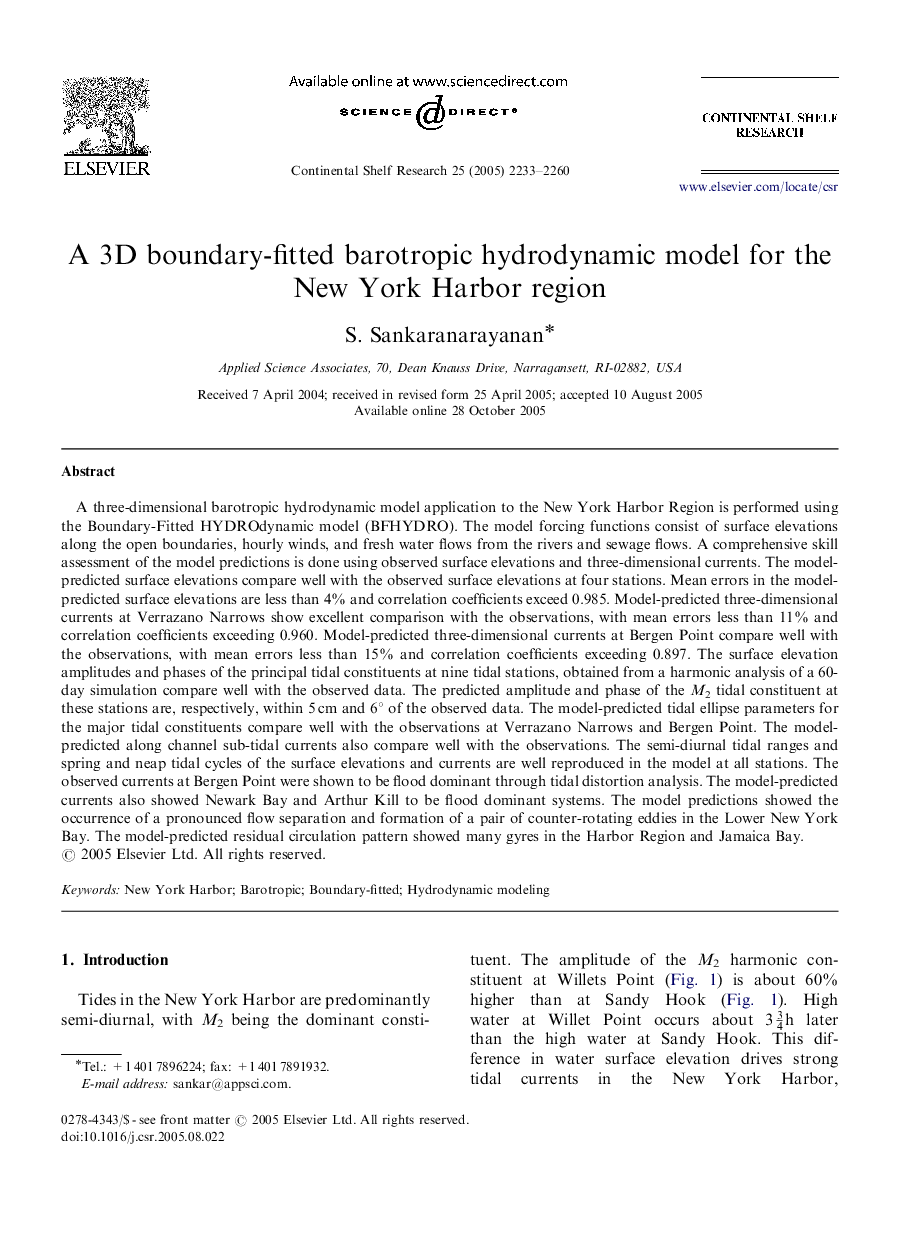| کد مقاله | کد نشریه | سال انتشار | مقاله انگلیسی | نسخه تمام متن |
|---|---|---|---|---|
| 4534147 | 1325263 | 2005 | 28 صفحه PDF | دانلود رایگان |

A three-dimensional barotropic hydrodynamic model application to the New York Harbor Region is performed using the Boundary-Fitted HYDROdynamic model (BFHYDRO). The model forcing functions consist of surface elevations along the open boundaries, hourly winds, and fresh water flows from the rivers and sewage flows. A comprehensive skill assessment of the model predictions is done using observed surface elevations and three-dimensional currents. The model-predicted surface elevations compare well with the observed surface elevations at four stations. Mean errors in the model-predicted surface elevations are less than 4% and correlation coefficients exceed 0.985. Model-predicted three-dimensional currents at Verrazano Narrows show excellent comparison with the observations, with mean errors less than 11% and correlation coefficients exceeding 0.960. Model-predicted three-dimensional currents at Bergen Point compare well with the observations, with mean errors less than 15% and correlation coefficients exceeding 0.897. The surface elevation amplitudes and phases of the principal tidal constituents at nine tidal stations, obtained from a harmonic analysis of a 60-day simulation compare well with the observed data. The predicted amplitude and phase of the M2 tidal constituent at these stations are, respectively, within 5 cm and 6° of the observed data. The model-predicted tidal ellipse parameters for the major tidal constituents compare well with the observations at Verrazano Narrows and Bergen Point. The model-predicted along channel sub-tidal currents also compare well with the observations. The semi-diurnal tidal ranges and spring and neap tidal cycles of the surface elevations and currents are well reproduced in the model at all stations. The observed currents at Bergen Point were shown to be flood dominant through tidal distortion analysis. The model-predicted currents also showed Newark Bay and Arthur Kill to be flood dominant systems. The model predictions showed the occurrence of a pronounced flow separation and formation of a pair of counter-rotating eddies in the Lower New York Bay. The model-predicted residual circulation pattern showed many gyres in the Harbor Region and Jamaica Bay.
Journal: Continental Shelf Research - Volume 25, Issue 18, November 2005, Pages 2233–2260